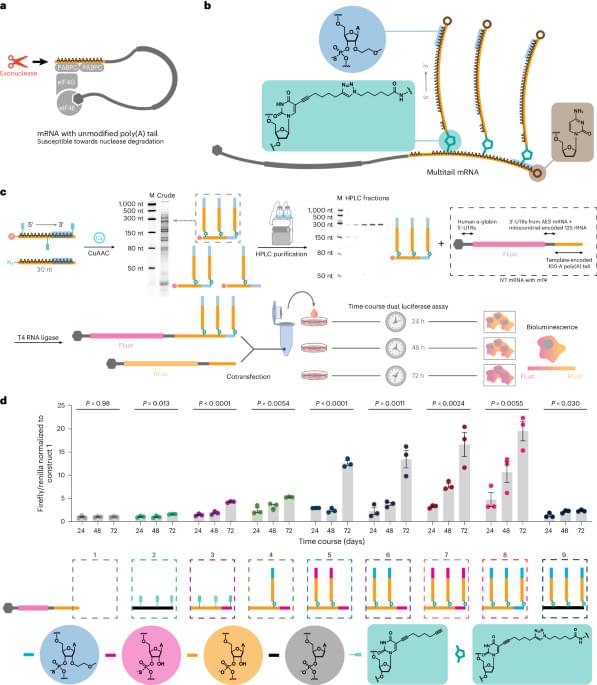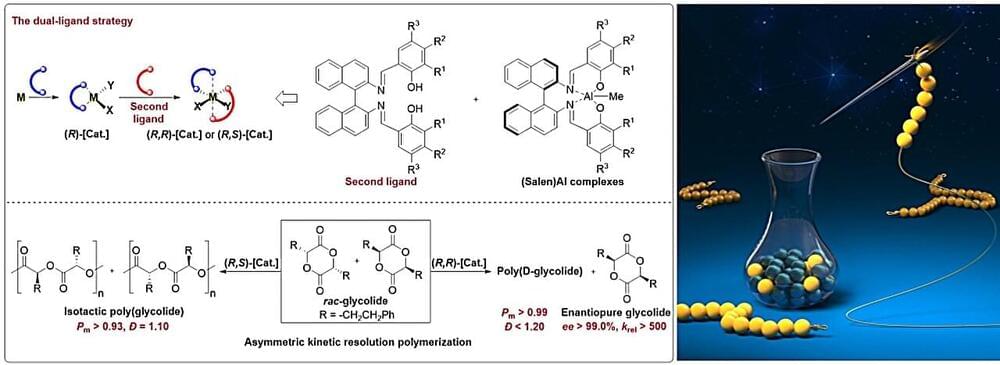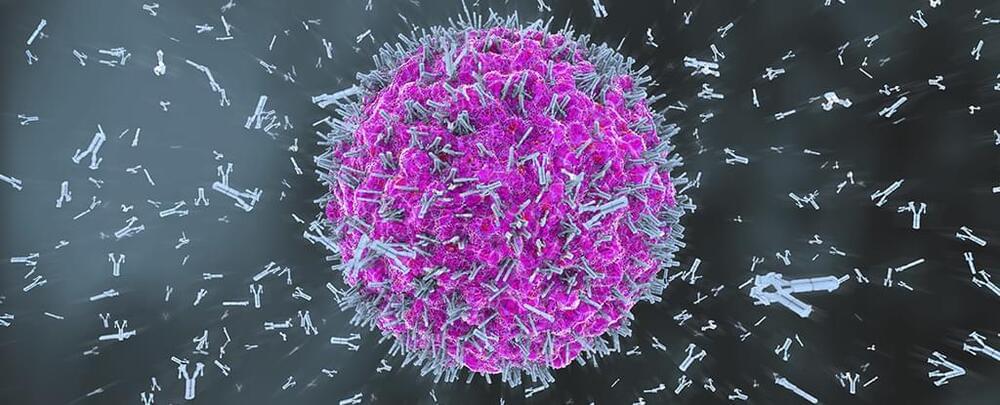Are you or someone you know struggling with porn addiction? Do you wonder how to quit porn effectively? To quit porn addiction, we need to understand the root causes of porn addiction first. This is a tough subject to talk about, which is why we made this video.
Category: chemistry – Page 167

Cannabis Vaping Liquids Contain Nano-Sized Toxic Metal Particles, Study Finds
“Cannabis vapes are newly regulated products in Canada, so we don’t yet have much scientific data about them,” said Dr. Andrew Waye. “This is an opportunity for us to look at some of the questions concerning the risks and unknowns of cannabis vapes.”
Do vapes pose health risks on par with the very tobacco and cannabis products it’s using to safeguard against? This is what a recent study presented at the ACS (American Chemical Society) Spring 2024 meeting hopes to address as a team of researchers investigated the potential health risks that vaping devices could pose, specifically pertaining to the vaping liquids that possess toxic metal nanoparticles, with both regulated and unregulated vaping devices. This study holds the potential to help researchers, medical professionals, and the public better understand the long-term health risks by vaping, which until now have been deemed a “safer” alternative to smoking cigarettes or cannabis.


China is building a railgun that can hurl crewed spacecraft into orbit
And the g-forces???
Rockets being passé, China is working on using an electromagnetic railgun to launch crewed spacecraft the size of a Boeing 737, weighing 50 tonnes, into orbit. This remarkably ambitious project is even more ambitious than it seems at first glance.
Call it a railgun, a catapult, or a mass driver, the idea of replacing rockets with an electromagnetic accelerator is a very attractive option. Instead of lifting off on chemical rockets that have to carry fuel and fuel to lift the fuel and fuel to lift the fuel and the additional fuel, it makes more sense to keep as much of the launching system on the ground while leaving the vehicle as light as possible.
The principle behind such a space railgun is simple, but the details are surprisingly complex and the numbers involved very quickly become daunting. If China can carry off using such a system to launch a spaceplane as part of its Tengyun project that began in 2016, it would be one of history’s major engineering achievements.

Heavy Element Quandary in Stars Worsened by New Nuclear Data
Astrophysicists have a cerium problem—models predict that certain stars should contain much less of this heavy element than astrophysical observations find. Recently performed experiments at CERN’s neutron time-of-flight (n_TOF) facility have widened the gap between theory and observations by 20% [1]. The researchers behind the work say that the results highlight the need for high-accuracy measurements of the nuclear properties of atoms, as well as for updated nucleosynthesis models of element formation. “Our experiment made the problem worse,” says Simone Amaducci of the INFN Laboratori Nationali del Sud, Italy. “That was unexpected, but it’s also interesting because it means there is something we don’t understand about how nucleosynthesis happens.”
Most of the Universe’s heavier elements form in stars via one of the so-called neutron-capture processes, in which an atomic nucleus absorbs one or more neutrons. In the slow neutron-capture process, or “s process,” the absorptions are spread out in time. As such, each absorption event results in either a stable nucleus with the same number of protons but one additional neutron or an unstable nucleus, which then radioactively decays to produce the nucleus of the next element in the periodic table—the one with one additional proton.
Using currently available models of the s process, researchers have correctly predicted the abundances of elements as heavy as barium (56 protons), lanthanum (57 protons), praseodymium (59 protons), and neodymium (60 protons) in stars that are known to be enriched via the s process. But the models appear to break down for cerium (58 protons), as the abundance predictions for this element in some low-mass, low-metallicity globular cluster stars have disagreed by up to 30% with observations. “This discrepancy is very strange, as the theory works for the neighboring elements,” says Sergio Cristallo, a team member who works on problems related to neutron capture at the National Institute of Astrophysics in Italy. “There is nothing in the models that should cause such a discrepancy just for one element.”

Novel Material Increases Perovskite Solar Cell Efficiency by 15.8%
In an article published in the Journal of Materials Chemistry C, Brazilian researchers describe a strategy to enhance the efficiency and stability of solar cells made of perovskite, a semiconductor material produced in the laboratory. The results of the project could be highly positive for the future of the solar power sector.
Developed by researchers at São Paulo State University (UNESP) in Bauru, Brazil, the method involves the use of a class of materials known as MXenes, a family of two-dimensional materials with a graphene-like structure combining transition metals, carbon and/or nitrogen, and surface functional groups such as fluoride, oxygen or hydroxyl. Their properties include high electrical conductivity, good thermal stability, and high transmittance (relating to the amount of light that passes through a substance without being reflected or absorbed).

Pushing the limit of the periodic table with superheavy elements
Scientists from Massey University in New Zealand, the University of Mainz in Germany, Sorbonne University in France, and the Facility for Rare Isotope Beams (FRIB) discuss the limit of the periodic table and revising the concept of the “island of stability” with recent advances in superheavy element research. Their work first appeared in Nature Reviews Physics.
In addition to the Nature Reviews Physics, Physics Reports has published a review on the atomic electronic structure theory for superheavy elements.
What is the heaviest bound nucleus and the heaviest bound atom and what are their properties? The nuclei of chemical elements with more than 103 protons are labeled as “superheavy.” They are part of a vast unknown territory of these nuclei that scientists are trying to uncover. Exploring this uncharted territory provides prospects for discoveries that connect the broad areas of science.

‘Dual-ligand’ strategy helps to achieve perfect asymmetric kinetic resolution polymerization
Studies on the synthesis and application of chiral materials has important scientific significance and market value. However, the design, synthesis and application of chiral materials are still in their infancy, and relevant research is limited to natural chiral polymer materials and very few artificial synthetic chiral materials.
In response to the key problems of synthesis, characterization, and mechanism research in the field of chiral materials, researchers from the Qingdao Institute of Bioenergy and Bioprocess Technology of the Chinese Academy of Sciences have proposed a novel concept of “asymmetric kinetic resolution polymerization” (AKRP), which provides a new method for the efficient synthesis, direct characterization of chiral polymer materials, and a new approach for studying the reaction mechanism of asymmetric polymerization.
The challenge in achieving AKRP is the design and synthesis of highly enantioselective catalysts. To solve this problem, the researchers proposed the “dual-ligand” strategy for the first time, enabling the highly enantioselective chiral (BisSalen)Al catalysts. The research is published in Journal of the American Chemical Society.

Scientists Find ‘Switch’ That Stops Immune System Attacking Healthy Cells
Our immune system is talented at telling the difference between the chemistry of our own body and that of an invading pathogen. When it malfunctions, our body can become host to an intense civil war.
Scientists are keen to understand this in more detail, and a newly identified ‘switch’ that deactivates a sensor of foreign DNA may provide important insight.
A key part of this discovery, made by a team from the Swiss Federal Institute of Technology Lausanne, is an enzyme called cyclic GMP-AMP synthase (cGAS).

Two ancient threads discovered in Milky Way galaxy named Shiva and Shakti
Khyati Malhan of the Max Planck Institute for Astronomy (MPIA) in Heidelberg, Germany, who spearheaded the research, expressed astonishment at the ability to detect these ancient structures.
“The Milky Way has undergone profound changes since these stars were born. The fact that we can still recognize them as a group is truly amazing and a testament to the unprecedented data provided by Gaia,” Malhan stated.
The discovery was made possible through Gaia’s observations, which allowed researchers to determine the orbits, content, and composition of individual stars within the Milky Way. “Upon visualising the orbits of these stars, two new structures emerged, distinguished by their unique chemical composition. We named them Shakti and Shiva,” added Malhan.